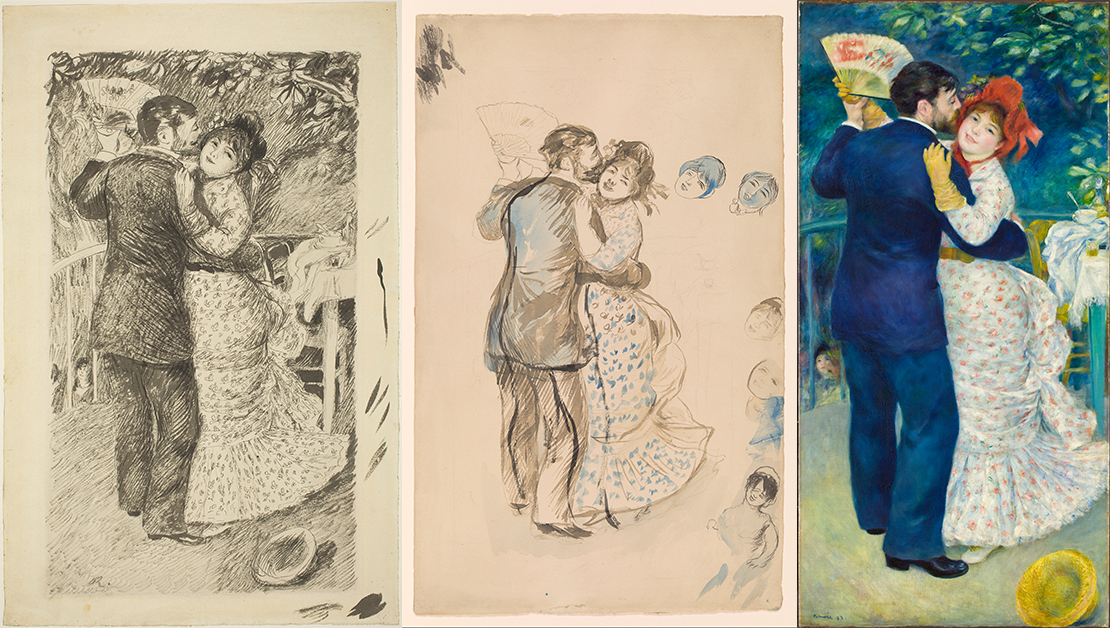The Morgan Library Opens a Landmark Exhibition of Renoir’s Drawings
The first exhibition of its kind in over a century, Renoir Drawings offers a rare look at the structure and precision behind the Impressionist’s fluid touch through more than 100 drawings, pastels, watercolors, and select paintings

Pierre-Auguste Renoir (1841-1919) is canonized as an Impressionist leader—one of the painters who pursued modern life with radical immediacy, working en plein air and preferring direct observation to figure studies. While most known for his painted masterworks, Renoir drew relentlessly throughout his career, from preparatory studies to on-the-spot impressions of contemporary urban and rural life, to formal portraits, to intimate sketches of friends and family.
This month, the Morgan Library & Museum presents “Renoir Drawings,” the first major exhibition in over a century devoted to his works on paper, offering a fresh look at the familiar master. Bringing together over a hundred drawings, pastels, watercolors, lithographs, and select paintings, the show “provides a more complete view of Renoir’s creative process,” says Colin B. Bailey, the museum’s director and this exhibit’s curator. In the Director’s Forward of the show’s eponymous catalogue, Bailey—who is a leading Renoir authority—echoed artist Berthe Morisot’s 1886 assessment of her colleague as a “draftsman of the first order.” Both wanted the public to see Renoir’s drawings, hoping to counter the myth of Impressionist casualness and reveal just how considered Renoir could be.

Seven years ago, Dr. Bailey first envisioned curating this exhibition when the estate of actress-turned-philanthropist Drue Heinz gifted the museum a large red-and-white chalk study for Renoir’s iconic painting The Great Bathers (1884-87). Inspired in part by François Girardon’s fountain frieze of sculpted nymphs at Versailles, Renoir labored on the painting for at least eighteen months. He produced around twenty drawings related to the composition, marking his deliberate return to the disciplined draftsmanship he largely abandoned at the start of the Impressionist movement.

At the Morgan, the canvas (on loan from the Philadelphia Museum of Art) hangs with these studies allowing visitors to trace two distinct phases: an early, fully worked, full-scale cartoon in red, black, and white chalk, followed by renewed, more concentrated figure studies with weight and torsion.



Beyond the bathers, drawings from the early 1860s register the discipline of rigorous academic training—precise studies of anatomy, drapery, and the antique. Then, Renior’s late-1870s drawings pivot to more brisk, on-the-spot sketches of modern Parisian life, where he traced figures in cafés and gardens with a restless economy of line. Portrait of a Girl (Elisabeth Maître) (1879), for example, demonstrates Renoir’s use of pastel to blend colors in modeling faces with a delicacy that oil seldom matches.

Beginning in the late 1880s, Renoir’s works became softer and more intimate. With this, he turned to watercolor as a kind of visual diary, seeing these works as memory documents often created during summer travels that later informed his studio work. During this period, Renoir also rendered tender chalk-on-paper drawings like Motherhood (1885), in which his partner, Aline Charigot, is depicted breastfeeding their first son.

In his final decades, even as arthritis limited his range of motion, Renoir continued to draw daily. Often characterized by fluid, thick lines and an emphasis on capturing voluptuous, sensual female forms, these late drawings affirm how he used drawing to stay connected to his craft, particularly when painting became harder.
Renoir called drawing “the soul of painting,” a way to keep eye and hand aligned. That spirit runs through “Renoir Drawings.” Every line reveals his persistence and passion, a testament to an artist who never stopped looking or learning. Together, these drawings show that Renoir’s “finished” paintings were only the visible half of a lifelong conversation between observation and expression, thought and touch; a dialogue at last, on paper.
Renoir Drawings is on view through February 8, 2026, at the Morgan Library & Museum on 225 Madison Ave in New York. The exhibition will then travel to Musée d’Orsay in Paris to be on display from March 17 to July 5, 2026.















